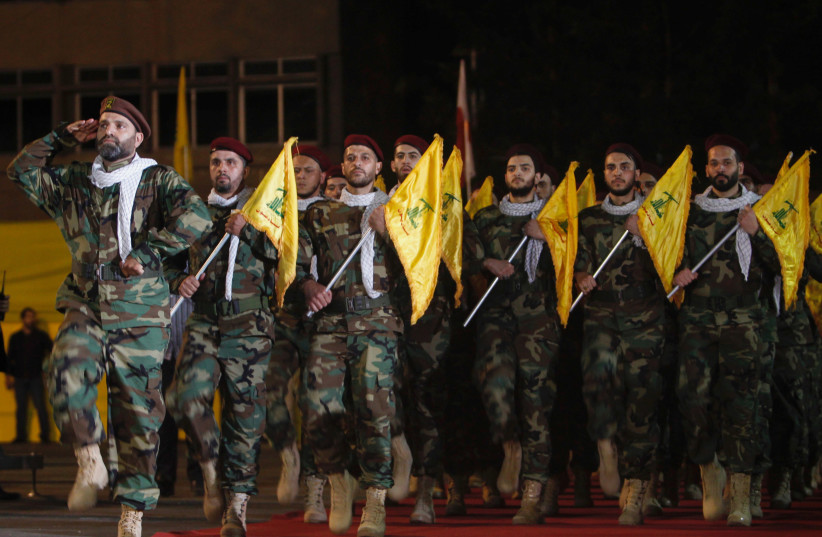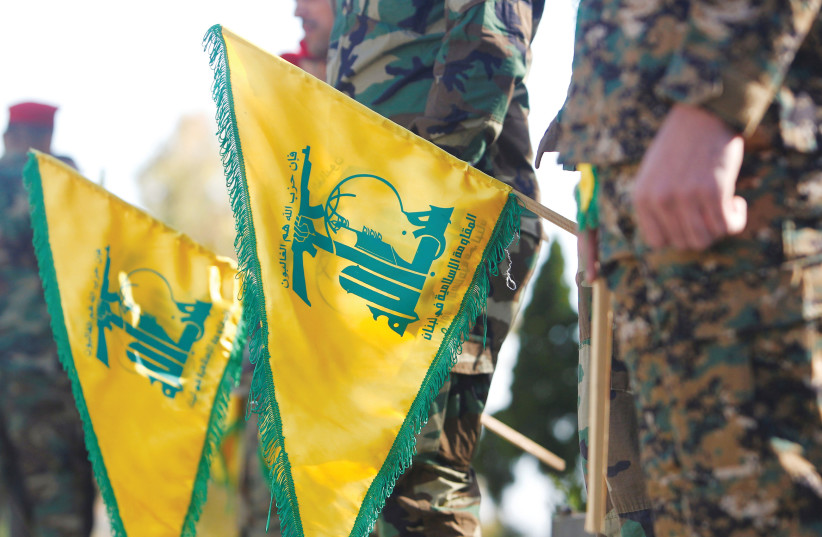The fight within the IDF about whether to fight Hezbollah and when – analysis
There is an ongoing battle within the IDF about whether a mega war with Hezbollah is inevitable, whether that war is months, a couple years or a much longer way off and whether it would be smarter for Israel to launch a surprise preemptive strike or to delay the conflict as long as possible and then only respond in self-defense.
That is the great game being debated in the top echelons of the defense establishment since Hezbollah’s more than 150,000 rockets are viewed by the IDF as a greater near-term threat than even Iran.
But there are proxy debates for that larger issue.
Currently and more imminently, top IDF officials are debating whether to use force to remove a relatively insignificant (in terms of size) and meaningless (in terms of danger) Hezbollah outpost which is a small amount of space into Israeli territory in the disputed Har Dov area – and if using force, how soon?
Virtually all top officials agreed that attempting to convince Hezbollah to remove the outpost using diplomacy through UNIFIL was the initially preferred option.
But after a period of weeks had passed, and certainly after the whole issue became public over a month ago, a growing number of IDF senior officials want to swiftly end the saga with force, and without further delay. Some officials even implied to the Jerusalem Post that an operation was due to take place last week, but clearly they have not won the debate yet.
 Members of Hezbollah march with party’s flags during a rally marking al-Quds Day, (Jerusalem Day) in Beirut (credit: REUTERS)
Members of Hezbollah march with party’s flags during a rally marking al-Quds Day, (Jerusalem Day) in Beirut (credit: REUTERS)Others still prefer a much more extended negotiation, even some more months, with the hope that if the issue falls out of the media, Hezbollah can eventually be prevailed upon to withdraw, especially if offered some other enticements.
These two issues are quite connected.
Confronting Hezbollah over the outpost makes the most sense
For those who see war with Hezbollah as inevitable, as coming sooner than later and who prefer a preemptive strike, confronting Hezbollah over the outpost sooner than later makes the most sense.
There is less fear of accidentally setting off an unnecessary war, because these officials tend to assume a bigger war is just a matter of when and not if.
In that case, they would rather Israel have the initiative, set the playing field and be able to take advantage of any surprise or momentum aspects between the sides.
Removing less than 10 Hezbollah soldiers from Israeli territory should be relatively simple. It could be done by 50 soldiers or a few hundred soldiers, offering a last chance to surrender or be arrested, and then moving in from all sides.
It could be done with air support, artillery support or using non-lethal gas to neutralize or distract the Hezbollah fighters, as IDF infantry or special forces move in.
They could be surrounded by all sides except a narrow path to withdraw straight back into Lebanon and then have IDF forces move in on them, hoping they take the path to withdraw.
Either way, it is less than 10 Hezbollah fighters against the entire IDF.
Why would it be so important for certain officials to act now against the outpost and to initiate broader action against Hezbollah?
IDF Northern Commander Maj. Gen. Uri Gordon has said that in the next war with Hezbollah, the terror group, in the early days, will be able to rain down around 4,000 rockets per day on Israel’s North, including Haifa, Tiberias and other key northern locations.
The Post has learned that the numbers could be even higher at the very start.
 HEZBOLLAH MEMBERS hold flags marking Resistance and Liberation Day, in Kfar Kila near the Lebanese border with Israel in May. (credit: AZIZ TAHER/REUTERS)
HEZBOLLAH MEMBERS hold flags marking Resistance and Liberation Day, in Kfar Kila near the Lebanese border with Israel in May. (credit: AZIZ TAHER/REUTERS)Gordon has said that even after a longer time of conflict, Hezbollah could keep to a rate of 1,500-2,000 rockets per day.
To give readers context for those numbers, during the 2014 Gaza War, the IDF said that Hamas fired around 4,500 rockets at Israel over the entire 50-day period.
This past May, Islamic Jihad in Gaza managed to fire 1,234 rockets on Israel in four days, so around an average of 300 rockets per day.
This means Hezbollah would be firing more than 10 times the number of rockets per day which Gaza can fire now, more than 50 times what Gaza could fire in 2014 and Hezbollah’s rockets are better and have longer ranges.
For IDF officials who want to strike preemptively, they believe that the 4,000 or more rockets per day could be significantly reduced if the IDF has Hezbollah on its heels, has blown up significant communications arrays and has already destroyed some of the most precise long-range weapons.
During the 2006 Second Lebanon War, the air force destroyed several dozen longer range and more powerful rockets in the opening minutes of the conflict – before the terror group had a chance to think about launching them.
The Post understands that the IDF’s intelligence penetration of Hezbollah and its weapons layout is several times deeper now than in 2006.
Some of these officers may even argue that removing the outpost with confidence may deter Hezbollah from war.
In contrast, other IDF officials view Hezbollah Chief Hassan Nasrallah as the most deterred leader Israel faces.
Whereas Gaza terror groups have started several larger conflicts with Israel over the last 15 years, and multiple ones in the last three years, and Iran and its Syrian proxies are constantly trying to open a new front against Israel on the Golan border, Nasrallah has overwhelmingly kept the Lebanese border quiet since 2006.
True, they admit that in the last half year, Nasrallah has gambled more with sending a terrorist to perpetrate an attack in Megiddo in March, with a variety of low-grade altercations with IDF border-adjustment crews and with allowing Palestinian groups to fire small numbers of rockets from his domain into Israel.
But if the IDF officials who are sure war is inevitable take all of the above Nasrallah gambles as signs that he is truly readying for war, the other IDF officials believe that these weak gambles betray Nasrallah’s unwillingness to risk a major conflict.
They would say that Israel went to wars by accident and unintentionally in 2006 with Nasrallah and 2014 and 2021 with Hamas.
These IDF officials worry that if Nasrallah loses face in too large a way that the same mistake could happen in 2023 with a war that was not inevitable. With Hezbollah’s capabilities able to harm Israel’s civilian home front far more than ever before (even if Israel “wins” militarily), they view taking any risk that could lead to a general war as a grave error.
Given that Har Dov is surrounded by Israeli forces and nowhere near Israeli civilians, they see no specific rush in resolving what many say was itself an accident by low-ranking Hezbollah personnel on the front, which Nasrallah only learned of and decided to back after-the-fact.
Israel’s fate then may be intertwined with what happens to these less than 10 Hezbollah fighters and their flimsy outpost.





Comments are closed.